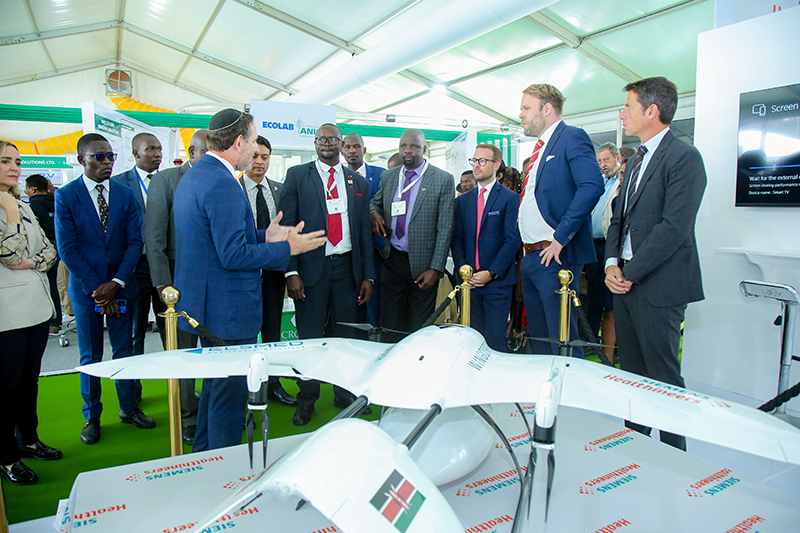East Africa’s premier healthcare and medical laboratory event, Medic East Africa, will take place at the Kenyatta International Convention Centre (KICC) in Nairobi, Kenya from 4 to 6 of September 2024.
Co-located with Medlab East Africa, the three-day event will bring together leading regional and international professionals for discussions on pressing topics within primary healthcare, as well as healthcare financing and leadership.
Over 250 exhibitors and 8, 000 professionals from more than 30 countries will gather for the second edition of this event, which offers distinct opportunities for networking, live product demonstrations and building lasting relationships.
According to Medic East Africa’s 2024 Healthcare Outlook for East Africa, the region’s medical sector, including doctors, nurses and lab technicians is understaffed. There is an average of 0.2 physicians for every 1, 000 people.
“Innovation and prosperous partnerships are central to our country’s efforts to meet UN healthcare objectives by 2030,” says Dr. Joseph Lenai, Acting Director of Preventive and Promotive Health Services from Kenya’s Ministry of Health.
Kenya is increasingly becoming an attractive destination for clinical trials and the country is also boosting its vaccine production capabilities. By joining the International Vaccine Institute, the county will benefit from technology transfers for cholera, measles, rubella, and typhoid vaccines.
Two vaccine projects hosted at BioVax and the Kenya Medical Research Institute will also see an additional US$50 million invested in the health sector.
“Medic East Africa is proud to be hosting this regional event in partnership with the Kenyan Ministry of Health. Support from key supporting organisations in the health sector will go a long way to ensuring that solutions to the region’s most pressing healthcare needs come out of this gathering,” said Senior Exhibitions Director Tom Coleman.
With the added support of professional groups like the Association of Kenya Medical Laboratory Scientific Officers as well as the Kenya Association of Private Hospitals, this meeting promises to reshape approaches to healthcare challenges.
These professionals must also grapple with the rising burden of non-communicable diseases, which now account for more than a quarter of deaths in East Africa.
For every 1, 000 live births in the region, about 49 children under the age five die – almost double the target of the third United Nations Sustainable Development Goal. The maternal mortality rate is also concerningly far off from the 2030 target of less than 70 per 100,000 live births.
Precious healthcare services are also only accessible to 34% of people in the region, leaving a large equality and access gap to be closed in East Africa.
Countries like Kenya are leading the way when it comes to healthcare innovation. Despite dealing with all these challenges, the country is seeing more investment in health infrastructure.
For example, digital technologies like telemedicine are used more and more every day to relieve pressure on medical staff and increase access for those who cannot afford the other costs associated with seeking care.
Attendees can look forward to engaging panel discussions, networking opportunities and a chance to see how the latest innovations in everything from medical laboratories to imaging and diagnostics, can help them tackle daily challenges faced by workers in the sector.
At last year’s conference, Harun Aseka, sales manager for Crown Healthcare said, “I met great clients whom I believe will play a pivotal role in the transformation of the healthcare system.”
Medic East Africa is about connecting key role-players to find homegrown solutions for the healthcare challenges of the region.
By Joseph Ng’ang’a




